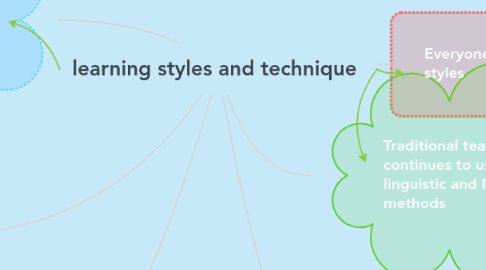learning styles and technique
by Iris Yamil López Sánchez


1. By recognizing and understanding your own learning styles, you can use techniques that are more appropriate for you. This improves the speed and quality of your learning.
2. The Seven Styles of Learning
3. Visual (Spatial): You prefer to use images, images and spatial understanding. Aural (audio-musical): You prefer to use sound and music. Verbal (linguistic): You prefer to use words, both in speech and in writing. Physical (kinesthetic): You prefer to use your body, hands and sense of touch. Logical (mathematical): You prefer to use logic, reasoning and systems. Social (interpersonal): You prefer to learn in groups or with other people. Solitary (intrapersonal): You prefer to work alone and use self-study.
4. Everyone has a mix of learning styles
5. Traditional teaching used (and continues to use) mainly linguistic and logical teaching methods
5.1. Those who use less-favored learning styles are often found in the lower classes, with several not-so-complementary labels and sometimes lower-quality teaching.
5.1.1. This can create positive and negative spirals that reinforce the belief that one is "smart" or "dumb".

